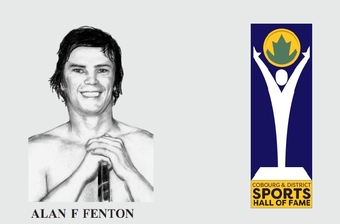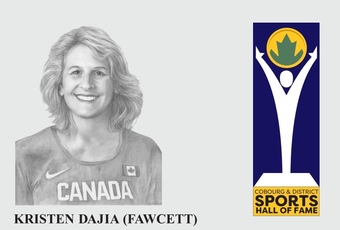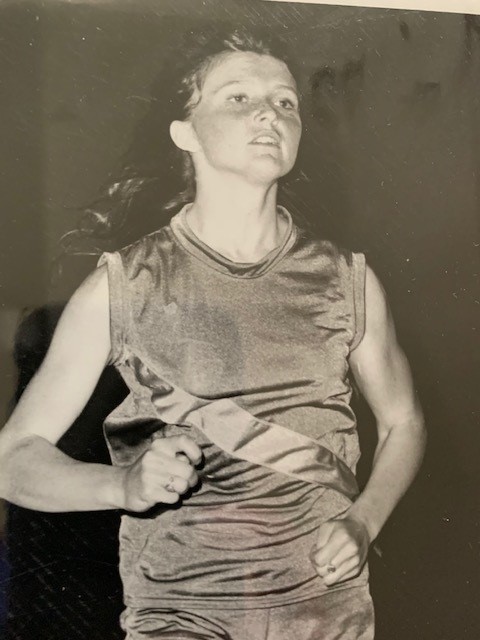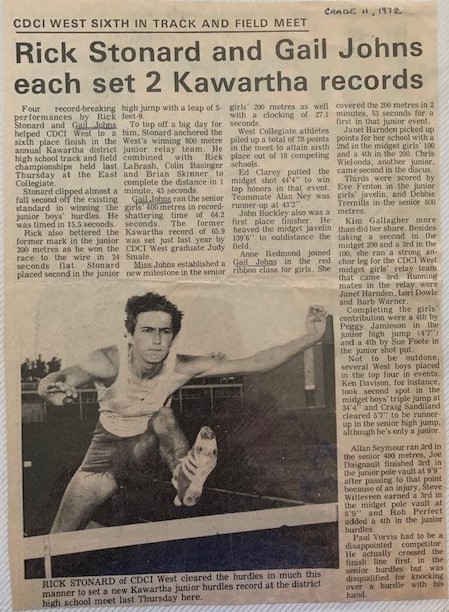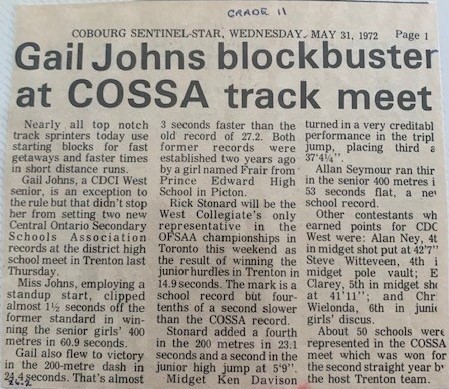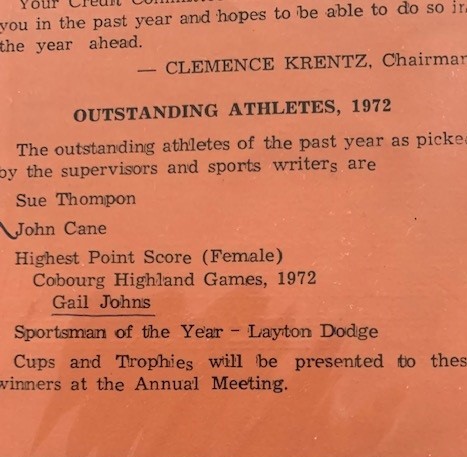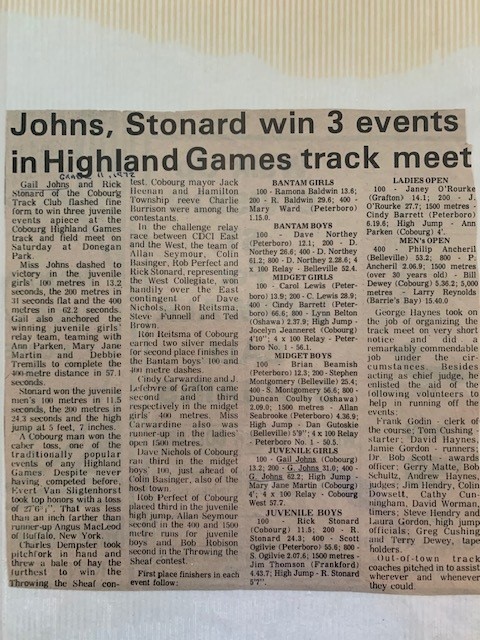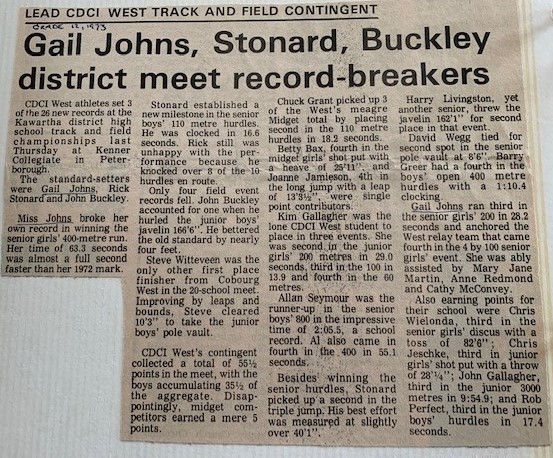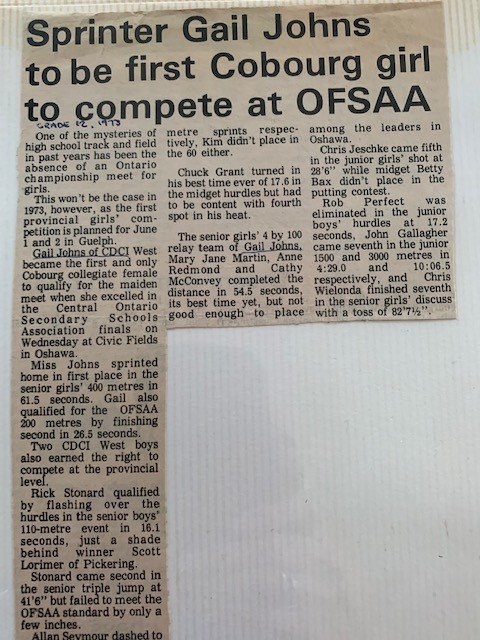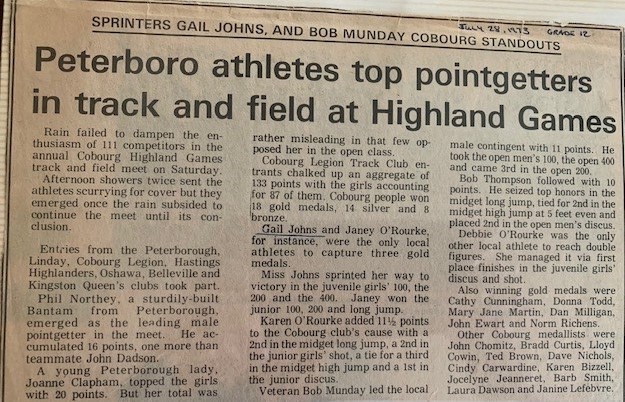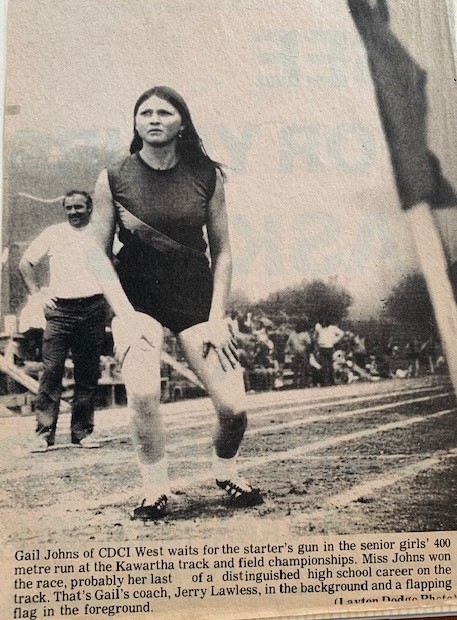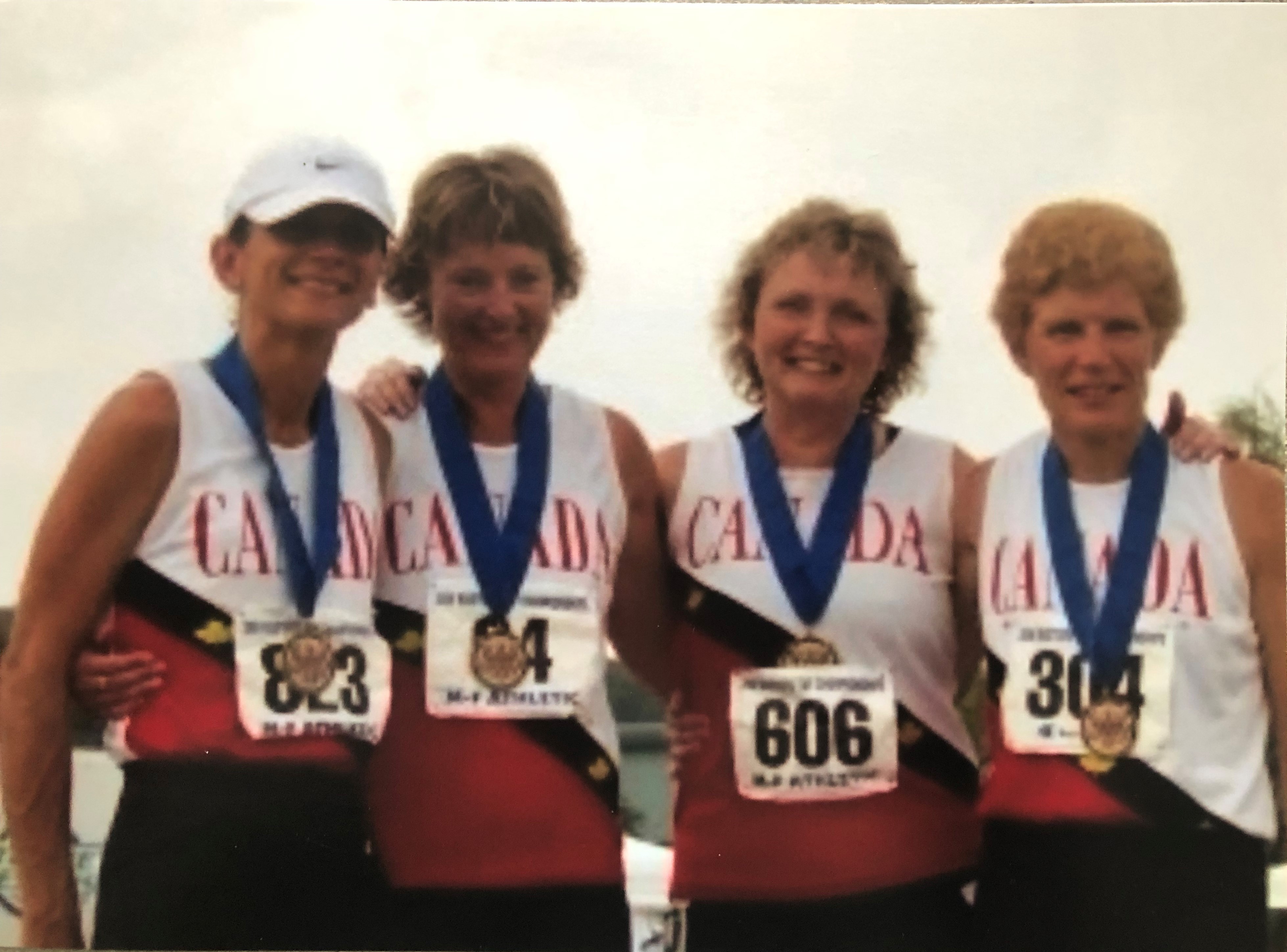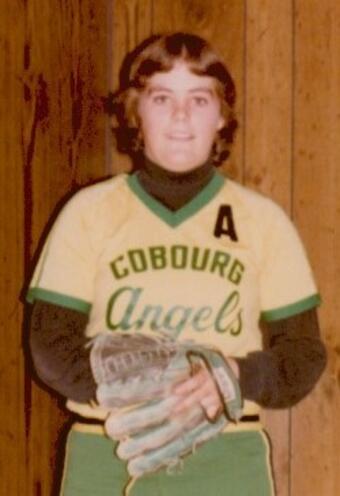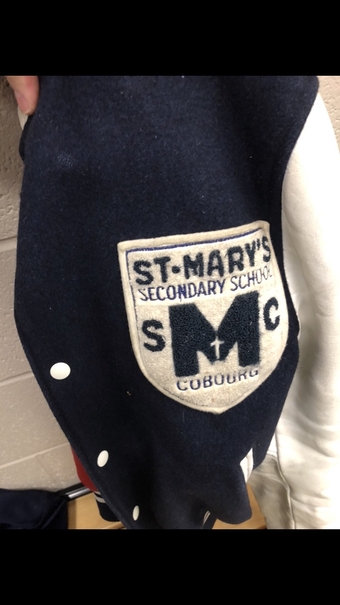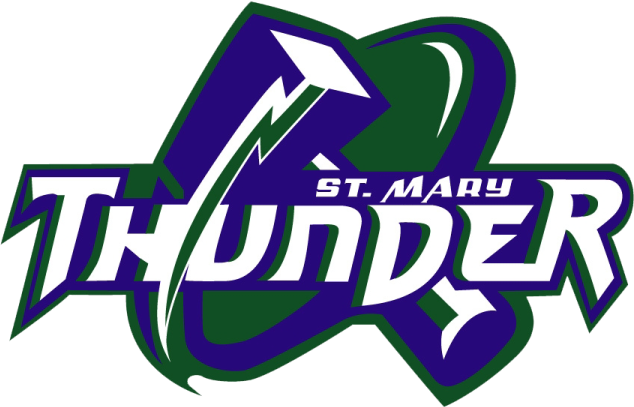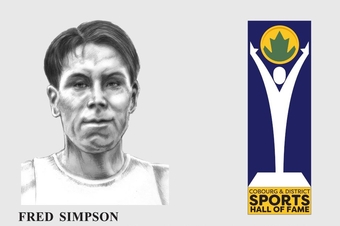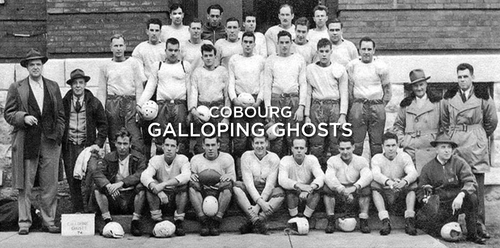Softball-Margie Matthews
by Patsy (Currelly) Hand
Margaret Anne Matthews was born on May 15, 1960, in Cobourg. From a very young age, Margie was an abundantly talented, multi-sport athlete who consistently demonstrated exceptional leadership. Her enthusiasm was contagious.
While in high school at CDCI West, 1974-1979, she played each year on the basketball, volleyball and badminton teams. She was on the track team and participated in javelin, discus, shotput and the 4 x 100 relay teams. It was in javelin that she excelled. In 1978 she was voted MVP of the basketball team, the volleyball team, she received a coaching award and was the school’s Athlete of the Year.
She was also awarded Cobourg's Athlete of the Year that year. In 1979, CDCI West created the “Matthews Award" which was presented to students for performance and leadership. After high school she played varsity hockey and basketball. She has been awarded Athletic Letters at all levels of school: public, high school and university levels.
Margie burst onto the provincial softball stage at the age of 12 when she played for David and Clarke Sommerville’s Sinclair Mustangs. They were successful in capturing the Ontario Novice Championship in 1972. Here is how David recalls Margie’s contribution to the win in the qualifying tournament leading up to the finals….
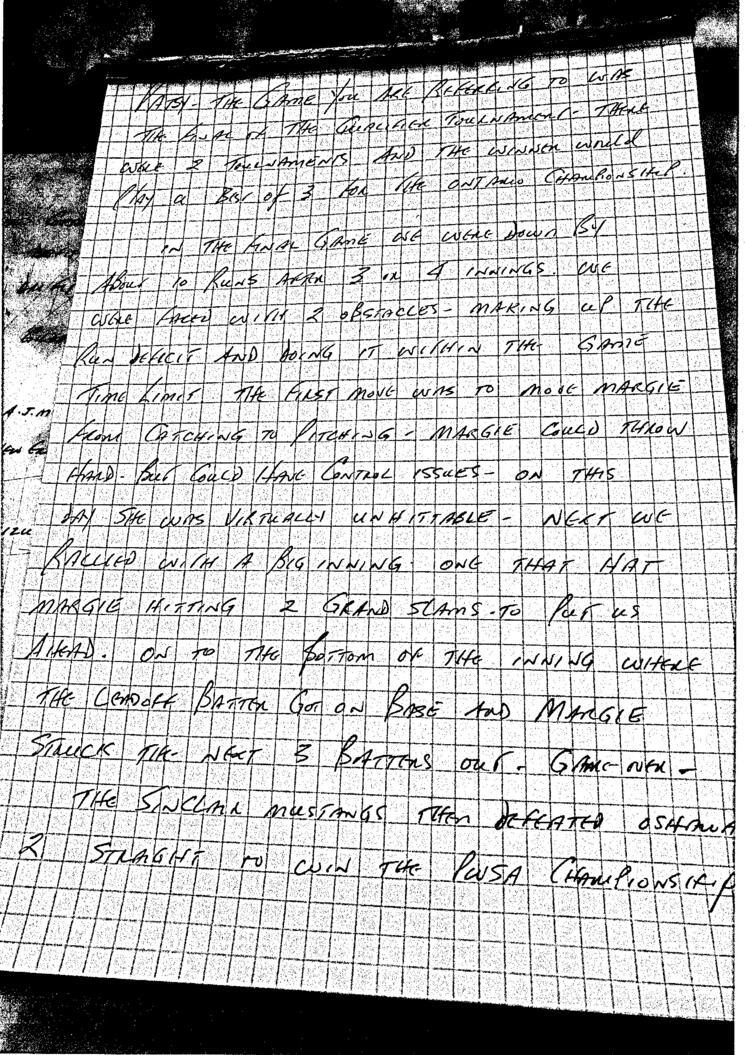
At 14, Margie Matthews joined Paul Currelly’s Cobourg Angels Juvenile softball team and competed against players that were 18 and 19 years of age.
Margie’s talents continued to shine. While playing with the Angels, she won two more Ontario Titles at the Junior B level in 1975 and 1976. In 1977, Paul decided to start a Midget Cobourg Angel team and as Margie was still eligible to play at this level, he built the team around her.
She was the captain that year and won the batting championship. Her determination, positivity and talent motivated the team to achieve a higher standard of play. She continued to play with the Angels and won an Ontario title in 1979 (Juvenile). Comments from her coach, Paul Currelly follow:

Margie left Cobourg for university and played Senior Tier I fastball with the Kitchener Kieswetters. She returned to Cobourg in 1984(Senior Tier II) and helped the Cobourg Angels win another Ontario Title. In 1985 Margie started a full-time job in New Hamburg and again left the area and played Senior Tier I softball with Kitchener.
She won their outstanding player award that year. In 1986 she was picked up by an opposing team, the St. Clements Suns to attend Expo ’86, a mini world tournament in Vancouver. In 1989 her team, the St. Clements Suns won an Ontario Senior Tier I Championship and went to the Canadians, placing 4th.
Margie continues to be an amazing athlete as a golfer. She has won 18 Club Championships (Stratford (16) & Craigowan-Oxford (2)). She played for team Ontario in 2004 and won a Canadian interprovincial title.
She won an Ontario 4-ball Tournament with MaryAnn Hayward in 2007 and an Ontario mid-Am tournament in 2009 (73-75-69). In 2011 she made the Ontario senior team that won a Canadian interprovincial title. She had a Golf Ontario Mid-Am ranking of 4th and 5th in 2009-2011.
Margie has not only been an amazing athlete but she also has coached volleyball and badminton at the high school level, coached softball at the Midget level and was assistant coach to the 1990 Cobourg Angels Senior Tier I fastball team that won the Ontario title and then went to the Canadian championship and placed 4th. She was a Softball Canada clinic instructor and has refereed volleyball, basketball and umpired softball.
As an athlete Margie has had many accomplishments in multiple sports and continues to add to these accomplishments but it is her talent, her work ethic, her enthusiasm and her love for sports that raises her above her peers.
Biography
COBOURG DISTRICT COLLEGIATE INSTITUTE (CDCI) WEST HIGH SCHOOL - 1974-1979
1974 - 1979 Participated on basketball, volleyball, badminton, and track & field (javelin, discus, shotput and 4x100 relay) teams. (Lots of awards)
1975 - won midget javelin (92' 4") & discus(74') both South Kawartha records, Kawartha javelin (92'6") and placed 6th at C.O.S.S.A.
1978 - MVP basketball, MVP volleyball, Coaching Award, Athlete of the Year
1978 - Cobourg Athlete of the Year
1979 - Won Senior South Kawartha javelin (98'5"), won Kawartha Singles badminton
1977 - 1979 President co-ed Athlete Association
1979 - Awarded newly created 'Matthews Award' for Performance and Leadership (awarded annually until school closed)
1979 - awarded 'Citizenship Award' (Burnett - Drope)
Awarded public school, high school and university athletic letters
Refereed volleyball and basketball throughout high school
Umpired one summer, girls Cobourg softball
SOFTBALL/FASTBALL
1972 - Ontario Novice Champions 'Sinclair Mustangs'
1975 - Ontario Junior B Champions, 'Cobourg Angels'
1976 - Ontario Junior B Champions, 'Cobourg Angels' (team was voted Cobourg Athlete of the Year)
1979 - Ontario Juvenile A Champions, 'Cobourg Angels'
1984 - Ontario Sr Tier II Champions, 'Cobourg Angels'
1986 - St. Clements Suns picked Margie up to attend the Expo 86 'mini world fastball tournament', held in Vancouver, B.C. Teams participating were from Japan, China, New Zealand, Australia, USA, Chinese-Taipei and the host Vancouver team
1989 - Ontario Sr Tier I Champions, Cambridge/St. Clements Suns
1989 - National Sr Tier I Championships Cambridge/St. Clements Suns (finished 4th)
1990 - Ontario Sr Tier I Champions, Asst. Coach, 'Cobourg Angels'
1990 - National Sr Tier I Championships, Asst. Coach, 'Cobourg Angels' (finished 4th)
POST HIGH SCHOOL
1979 - 1980 Centennial College varsity College hockey- Co-MVP
1980 - 1981 Wilfrid Laurier University- varsity basketball team- Voted Rookie of the Year
1981 - 1982 Wilfrid Laurier University- varsity basketball team
1983 - 1989 competitive Senior womens hockey- Kitchener and St Clements
COACHING
1978 - Midget girls volleyball - CDCI West
1979 - Midget girls volleyball - CDCI West
1983 - Badminton - CDCI West
1983 - Stratford Midget girls softball team
1983 - Softball Canada - clinic instructor
1990 - Cobourg Angels, assistant coach, senior fastball team
GOLF - 1993-present
2004 - made Ontario women's amateur team by placing 4th at ON tourney
- team Ontario won Canadian inter-provincial title
2007 - won Ontario 4-ball tournament with MaryAnn Hayward
2009 - won Ontario Mid-Am title at Markland Woods (73-75-69)
2011 - made Ontario senior team by placing 3rd at ON tournament
- team Ontario won Canadian inter-provincial title
- placed 8th at Canadian tournament at Whitevale G.C.
2009 - 2011 Golf Ontario mid-am ranking 4th and 5th 2009-2011
Won 16 Stratford Club championships, 2 at Craigowan-Oxford



